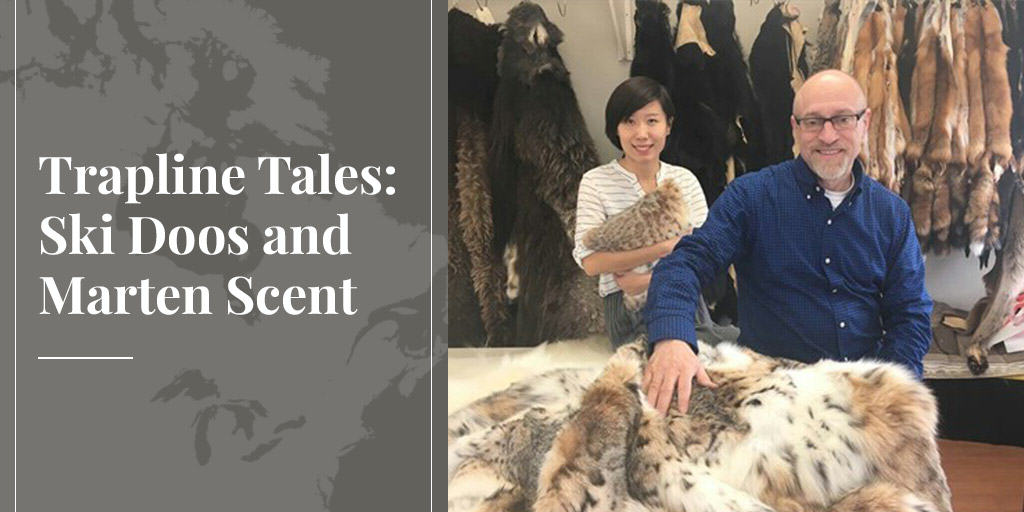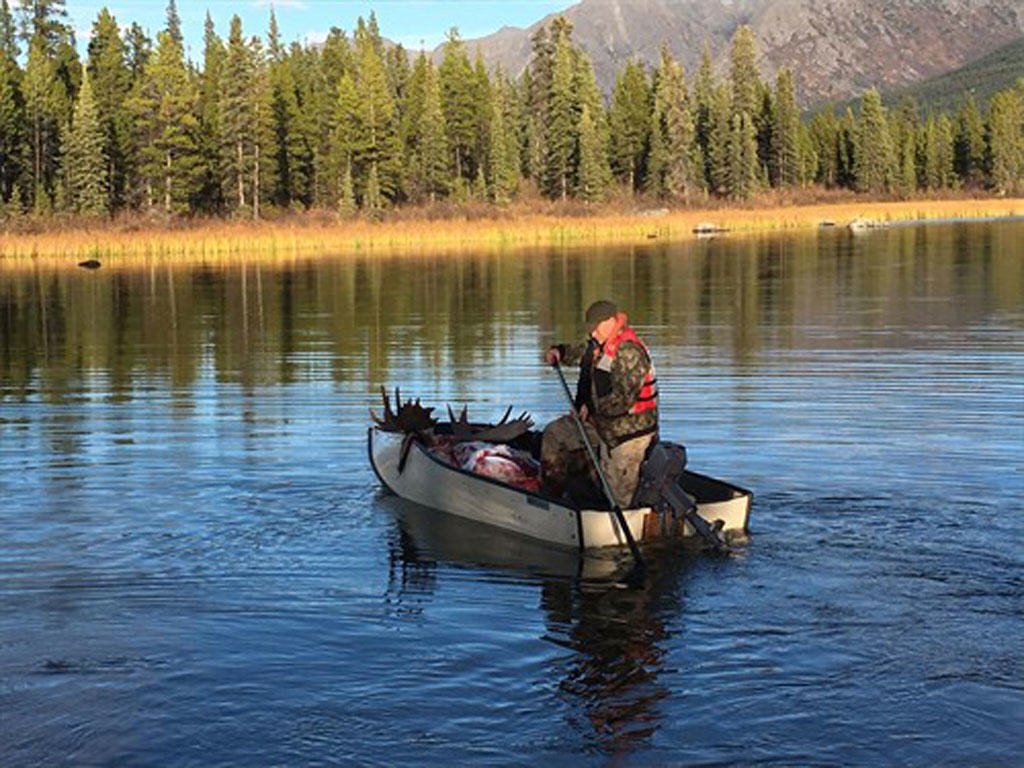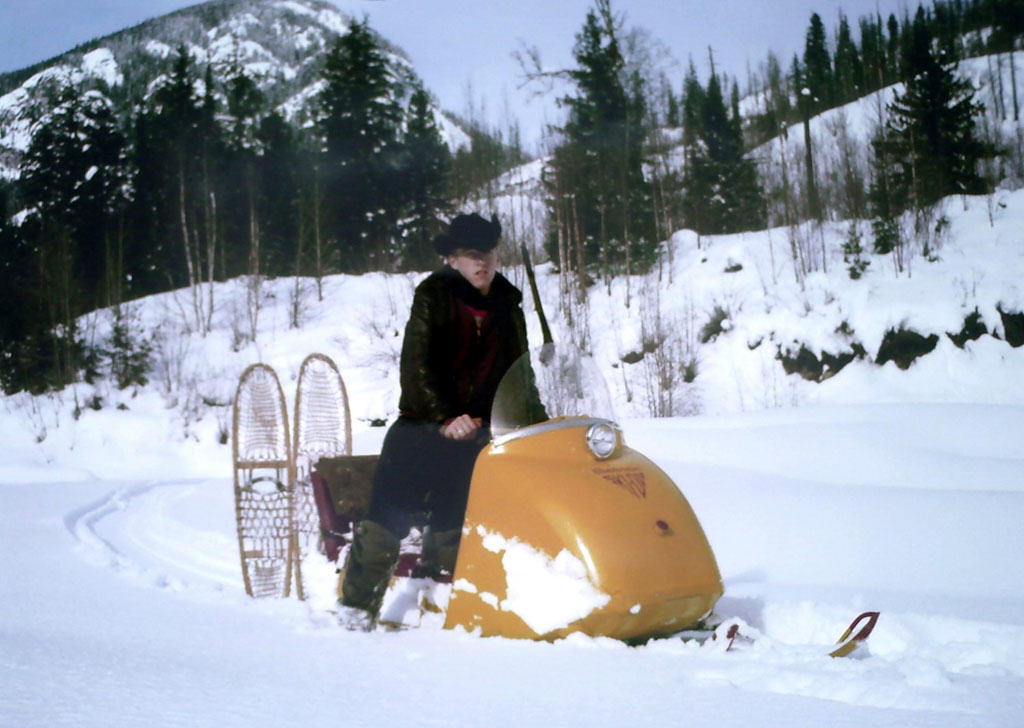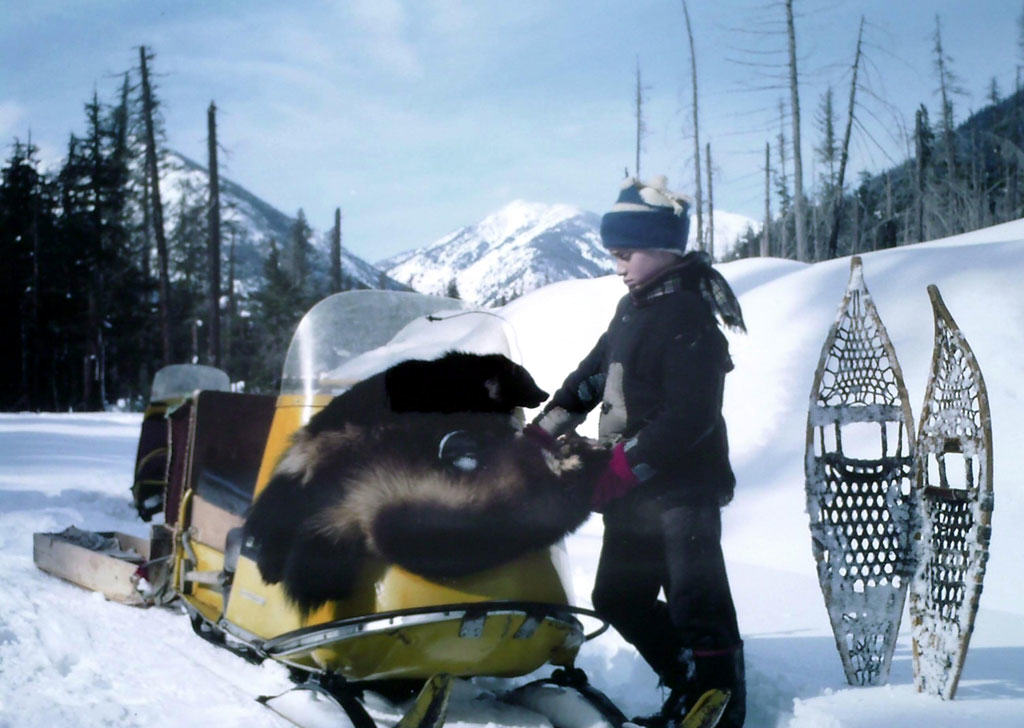
Welcome to Fur Trade Tales, our new series of real-life stories from real people of the fur trade. We kick off with our first Trapline Tales, but look out for Fur Farm Tales, Furrier Tales, and more to come. If you'd like to contribute, please let us know at [email protected]
Everyone in the fur trade has tales to tell, and I am honoured that Alan Herscovici – the creator of Truth About Fur – thinks mine are worthy of launching Trapline Tales. It’s the least I can do. Alan has devoted his working life to the trade, sometimes at great personal cost, and has been a passionate spokesperson to the media on behalf of us all. We owe him a great debt of gratitude.
Today I run a company called Fur Canada, making a range of fur products, museum-quality taxidermy specimens, and traps, but my journey in the fur trade began long ago, in a place called the West Kootenay, in British Columbia. I grew up there in the 1960s and ’70s, and it had to be the best childhood any kid could experience. With my parents and siblings, I learned the ways of living off the land. We grew every kind of vegetable, had milk cows, chickens, horses and beef cattle, and in winter I would assist my father on his fur trapline.

Snowmobiles – and a Missed Opportunity
Every weekend during winter was a new experience. My father’s trapline was 100 kilometres long, and it took us five years just to rotate every corner of it. In 1963, we also acquired the area’s first snowmobile.
One day my mother and I were shopping in Nelson when I spotted a parked truck with two big, yellow snow-plowing machines on a trailer. “What are they?” my mother inquired of the gentleman attending them, who happened to be a distributor. He graciously explained how they worked and their advantages over snowshoeing. He called them “snowmobiles”, and they were made by a Quebec company called Bombardier. She said her husband was a trapper and might be interested in one, so he followed us home. My father quickly took a liking to these machines, and since it was late, invited the gentleman to stay the night.
Next morning, my older brothers and father road-tested the machines, and by lunchtime the deal was made. We were the proud owners of a brand new Bombardier snowmobile! I still have it to this day, and one day will restore it to its original state.
During that winter and the next, the gentleman made follow-up visits in case repairs were needed. He was very impressed with my father and his success with the machine, because within that first winter, he had contracts with the power company and timber company to check on their power lines and spar tree equipment that was inaccessible in the back country.
On one of his visits he told my father that he was the sole distributor for Alberta and British Columbia, and the territory was now more than he could handle. Would my father like to take over the distributorship for BC? My father pondered for a moment and could only envision the excessive work ahead in promoting, selling and servicing the product during the trapping season – the most important part of the year for him. His answer was an emphatic “No!” I’m not sure he gave much thought to setting up his two teenage sons and me, then just six years old, in the snowmobile business, as fur trapping was his passion. You could say, there was a great missed opportunity for the family, as hindsight is always 20/20.

Breaking Trail
A few years later my father purchased another snowmobile. At this point Bombardier was selling them under the brand name Ski Doo, and our new Ski Doo was called an Olympic.
At 10 years old, I was operating our original Bombardier and my father ran the Olympic, because it was much bigger and heavier. We were trapping in the high Selkirk Mountains, so it was common to get 40-60 centimetres of snow in a week. He would break trail and I would follow. When the snow became too deep and the machines bogged down, out came the snowshoes and I would start breaking trail one step at a time. In that deep, fluffy snow it was difficult, so I would only go about 300 metres and return to the snowmobile. I would get it unstuck, fire it up and away I went. Straddling my freshly broken snowshoe trail, I would get the machine up to full speed until that ole Bombardier hit the virgin snow, go 20 metres and come to a stop, stuck again. Out came the snowshoes and the process started all over again.
Many a Saturdays were spent breaking trail. We would return the following day to set traps. Then a few days later return to check the traps. This kind of fun went on from December to the end of February, when the high-country trapping season ended.

Stinking Rotten Scent
In the summer there was no trapping, of course, but it was still on our minds, and one of the highlights was making call scent for marten. There were two goals. First, it should not freeze. And second, it should be a stinking rotten scent, and the hot summer weather was perfect for this.
Here’s how we did it:
- Take 10-20 mink scent glands, and 10 complete beaver castor glands. Chop and mash them into a fine paste, then place in a glass gallon jar.
- Add 2 cups of herring fish roe.
- Add 1 litre of fish oil – herring or salmon works great.
- Stir ingredients until fully mixed.
- Place the jar atop the roof in full sun with a light lid cover.
- Every 30 days give ingredients a stir.
- After 90 days, remove the jar from the roof and secure with a tight lid until trapping season starts.
During the summer, our recipe would cook and percolate on the roof. It was one of those odours that had to be acquired in order to appreciate the effort that went into making this eau du toilet scent.
All trappers understood the value and creativity of such a fine call scent and its importance in trapping marten. My mother, on the other hand, did not have the same appreciation for our efforts. She had a few choice words for us during those hot spells when she was hosting summer garden parties and the marten eau du toilet scent would waft its way down from the roof top and into the party.
Parting Shots
• Shame on provincial governments! Shame on Air Canada! Canada has a free trade agreement with the USA, Mexico, Korea and others, but we don’t have free trade and free flow of goods within our own country! And can you imagine? Our national airline has an embargo on a wildlife species that the Inuit people of the Canadian Arctic legally harvest for sustenance!
• Sorry Mum! The first critters my father trapped, back in the 1920s, were skunks, when their fur was highly prized. He always joked that his wedding day, November 10, was also the first day of the skunk-trapping season. He told that joke for 72 years until he passed away on his 97th birthday. My mother did not quite see the humour. She says the joke wore off after the first five years.
• Squirrel surprise. When I was about 10, a chum and I ventured into the realm of squirrel cuisine. After hours setting up a spot in the woods, including a makeshift rotisserie, finding dry wood in three feet of snow with wet matches, smudge smoke in our eyes, wet clothes and cold feet, we were ready. We skinned and eviscerated that little critter, then stuffed it with hazelnuts and roasted it over an open fire. Surely this would be a mouth-watering meal, the best-tasting squirrel ever! Well, let’s just say that it sounded better than it turned out. It was several more years before I ventured back into the fine cuisine of squirrel cooking.
SEE ALSO: Top 5 tasty furbearers: Muskrat stew and more
• Name-dropping. Among the many products my company makes are coyote fur collars for parkas, and one of our clients has an impeccable pedigree: Amundsen Sports of Norway. The name rings a bell, right? CEO Jorgen Amundsen is carrying on a family tradition of adventurers started by his great uncle, Roald Amundsen, the first man to set foot on the South Pole in 1911!











Great read. Thank you. Sonja and Paul, trappers in Yukon.
I Think you came from a Great Family / I am also a Trapper I always say nothing smells worse than a Trapper But I love it
Kel
Really good read Calvin, thanks
I love the story`~
Those were the good old days eh Cal? I skinned my share of beaver and muskrat. Tell the story of how we jumped on the bank of the little Slocan lake to scare up a few muskrats. Love you brother.
Sheila
Great article Calvin! I did not know you grew up in a trapping family – the picture of you as a little boy is beautiful and I loved the parting shots segment, especially the story of your parents – it made me laugh – adorable!
I liked the story!
David 🙂